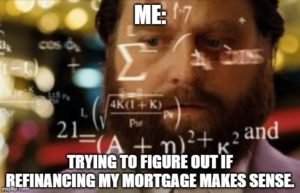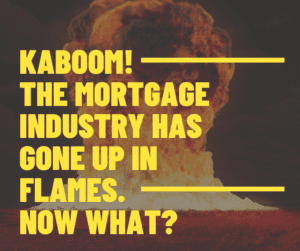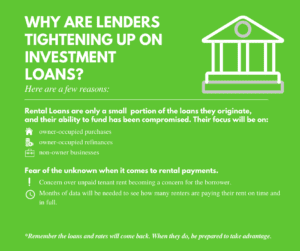How to Know When a ReFi Makes Sense
Categories: Blog Posts, Friday Fun, Resources, Tips
To refi, or not to refi: That is the question.
And we get this question a LOT. “Does it make sense to refi if I only plan to hold onto the property for a few more years?”
Earlier this week, we discussed the power of refinancing (and the math behind it.) Do the numbers support taking on extra years of payments?
For some of you, they do. For others, you might be left thinking, “But wait! What if I’m not going to keep the property for 24 or 30 years? At what point does it actually make sense to refinance?”
However, if you are not going to keep the property through the next 30 years, you’ll need to look hard at what the costs will be over the expected period. The key here is determining which path will cost you more money and which one will keep more in your pocket.
GOAL: Keep more money in your life and less in the hands of bankers.

Let’s look at an example:
You’re planning to keep a property for 3 years and then sell it. The question is, what will put more money in your pocket and cost you the least over those next 3 years?
Here is how we figure this out:
Step 1: Ask your mortgage company to run an amortization chart on your current loan and your new loan.
2: Then, pull your principal and interest from your current mortgage company’s website.
3: Next, ask your mortgage broker to give you the principal and interest from the new loan.
4: On each loan, multiply the payments by 36 (the 3-year window before you sell the property) and add the balance of your loan at the end of 3 years.
5. Lastly, compare notes and find out what would be the lowest amount. This is the one that will keep more money in your pocket.
Ultimately, this is just a pure and simple scenario of determining exactly how much the loan will take out of your pocket over the course of 3 years. We’re not looking at monthly cash flow, because true dollars out are pure and simple. This is your true cost out of your pocket.
If you need help, we’re happy to step in. Give us a call, and we can run all the numbers for you and see if it makes sense. If it does, we can help you out even further by securing low rates and costs on your refi!
*All non-commercial and construction loans offered by TNS Loans NMLS #1719349


















